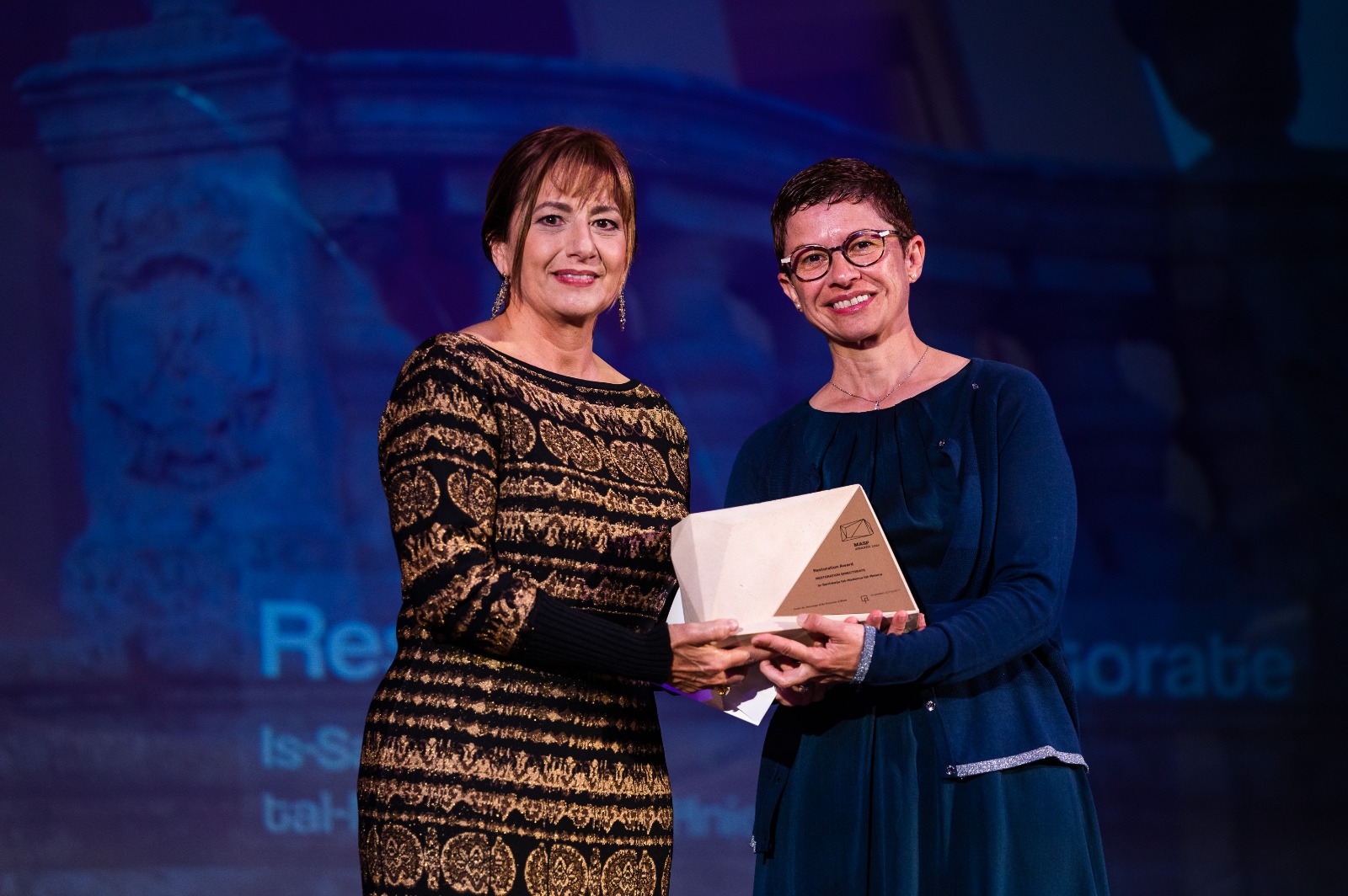The restoration of Is-Santwarju tal-Madonna tal-Ħniena in Qrendi by the Restoration Directorate presented a unique challenge. The church’s current structure, constructed between 1650 and 1688, replaced an earlier chapel due to its inability to accommodate the growing number of pilgrims.
Guided by the philosophy of allowing the sanctuary to reveal its secrets through meticulous restoration techniques, the multidisciplinary team led by Chief Architect Ivana Farrugia embarked on a journey of historical discovery.
“I believe that the success of this restoration project lies mainly in the fact that it was approached by a multidisciplinary team, having a good grasp of restoration ethics and techniques and extensive practical experience, seeking to uncover the site’s historic and artistic values with the intent of safeguarding said values and passing them on to future generations,” Perit Farrugia recounts.
Though at first glance, one could only perceive “standard” conservation issues, through detailed historical and scientific research, the team was very much aware that the site was, in fact, a complex multi-period structure with long-forgotten features possibly lying hidden beneath existing, less relevant, layers.
Whilst still intervening on the material of the building fabric, with the intent of preserving it, the restoration project undertaken by the Restoration Directorate, sought first to confirm the presence or otherwise of hidden elements attesting to the site’s different historic periods. Then, treading with utmost care and attention, historically and artistically relevant features were uncovered consolidated and reintegrated.
Perit Farrugia said: “At the end of the project we have a monument whose rich and colourful history is now much more easily legible. It is no longer restricted only to historians through documents stored away in archives, but it is accessible to all who visit the church.”
“Whilst so honouring the past, the restoration project also sought to give back to the community a functional church and opening a new chapter in its history,” she added.
Focusing on the field of architectural restoration, Perit Farrugia shares that though it is not exempt from worries and difficulties, it remains a very rewarding field to work in. She claims that the privilege of working on historic beautiful monuments, and the excitement behind every hidden detail revealed and restored override all the troubles associated with this job.
She says that “despite the intrinsic job satisfaction behind every successful completed project, the recognition given by the MASP Awards provides an additional boost to architects and designers to pursue in giving their best, in striving to intervene on the local scenario positively”.
“In our particular case, the acknowledgement given through the Restoration Award encourages us to pursue with our intent of safeguarding our architectural heritage through the implementation of best practice restoration projects,” Perit Farrugia concludes.

Senior Architect Ivana Farrugia (right) receiving the MASP Restoration Award
The MASP Awards, organised by the Planning Authority and held under the patronage of the President of Malta, promote and give recognition to quality architectural and interior design projects that promise to leave a positive mark for decades.
The awards celebrate the meticulous work and innovation of the people behind these iconic projects, ranging from established professionals to graduating students.
For more information about the Planning Authority’s awards, click here.
Main Image:
